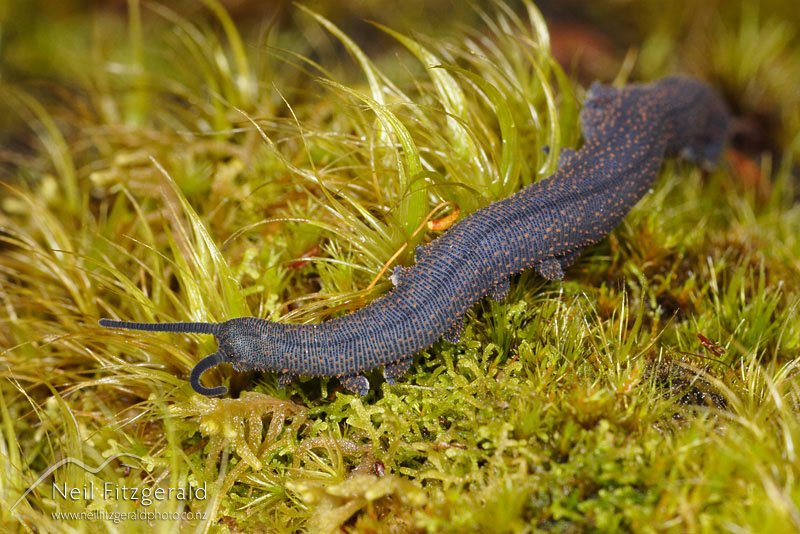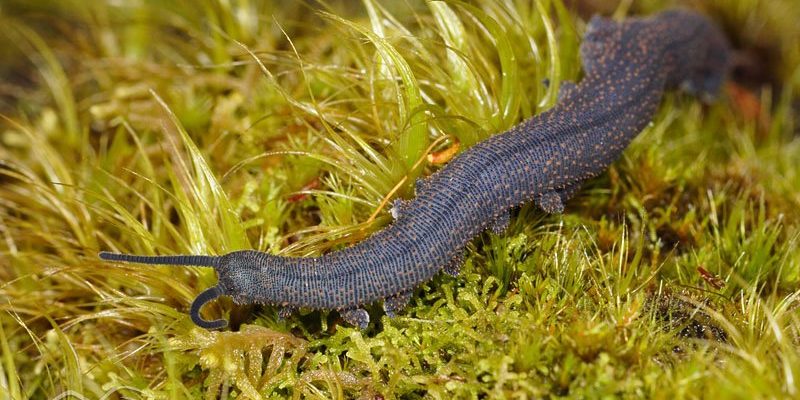
Let’s dive into the conservation status of velvet worm species worldwide. For those who might not know, velvet worms are part of the phylum Onychophora, boasting a unique anatomy and a place in the ancient lineage of life on Earth. As we explore their world, I’ll unpack why their conservation is vital not just for them, but for the health of their ecosystems too.
Understanding Velvet Worms: What Are They?
Velvet worms, often called “peripatus,” are soft-bodied invertebrates that look a bit like a mix between a worm and an insect. They have segmented bodies covered with a velvety texture—hence their name—and can range from a few centimeters to over twenty centimeters long. If you’ve ever seen one, they’re usually a soft shade of brown, green, or blue, which helps them blend into the forest floor.
These fascinating creatures are predatory, using a unique method to catch their prey. They can shoot a sticky slime to trap insects, showcasing a hunting style that feels like something straight out of a nature documentary. Their habitat consists primarily of tropical and subtropical forests, which offer the moist conditions they thrive in. The presence of velvet worms is often an indicator of a healthy ecosystem; when they flourish, it typically means the environment is balanced and thriving.
Why Are Velvet Worms Important?
You might be wondering why we should care about tiny creatures like velvet worms. Well, here’s the thing: they play a crucial role in their ecosystems. Velvet worms help maintain the balance of insect populations, ensuring that no single species overtakes the habitat. By controlling these populations, they contribute to the overall health of biodiversity in their environment.
Moreover, velvet worms can tell us a lot about environmental changes. Because they are sensitive to habitat alterations—like deforestation or climate change—their decline can serve as an early warning sign for larger ecological issues. The loss of velvet worms could indicate further problems in the food web, which ultimately affects many other species, including larger predators that rely on them.
Current Conservation Status of Velvet Worms
The conservation status of velvet worms varies widely across different species. Many of them are not well-documented, leading to a lack of robust data on their populations. However, habitat loss due to deforestation, urbanization, and climate change poses significant threats to many velvet worm species.
Some species, like *Peripatus capensis*, have been assessed as vulnerable, while others remain poorly studied and thus are classified as data deficient. This means we simply don’t know enough about them to determine how many are left or how they’re faring. Conservationists are rallying to research these organisms more thoroughly, aiming to protect their natural habitats and ensure their survival.
Threats to Velvet Worms
If you’re picturing a velvet worm as a tiny superhero, there are some real villains in their story. Here are the main threats they face:
- Habitat destruction: Forests are being cleared for agriculture and urban development, which directly impacts the spots where velvet worms live.
- Climate change: Changes in temperature and humidity can disrupt the delicate environments these worms need to survive.
- Pollution: Chemicals released into their habitats can harm not only velvet worms but the entire ecosystem they help sustain.
These threats combine to create a dire situation for many species of velvet worms. They might be small, but their ability to signal the health of their environments makes them a big deal in the conservation conversation.
Conservation Efforts for Velvet Worms
So, what are we doing about these squishy little beings? Conservationists are working on several fronts to ensure the survival of velvet worms and their habitats. Some initiatives focus on preserving forest ecosystems through sustainable practices, allowing natural habitats to remain intact.
Researchers are also conducting studies to gather critical data on various velvet worm species. Understanding where they thrive and how many are left is the first step in crafting effective conservation strategies. Some countries have started creating protected areas that include velvet worm habitats, which is a promising sign for the future.
What Can We Do to Help?
You might feel a bit disconnected from velvet worms—after all, they’re not exactly the most common household topic! But there are still ways you can contribute to their conservation:
- Educate yourself and others: Sharing information about these unique creatures can raise awareness about their plight.
- Support conservation organizations: Donating to or volunteering with organizations that work on habitat preservation can have a direct impact.
- Be eco-friendly: Reducing your own carbon footprint and choosing sustainable products can help tackle climate change and pollution, benefiting not just velvet worms, but countless other species.
Every small action counts, and you might be surprised at how much of a difference you can make!
The Future of Velvet Worms
The future of velvet worms is tied closely to our environmental choices and policies. By prioritizing conservation and fostering sustainable practices, we can help ensure these ancient creatures continue to thrive.
Their unique adaptations and vital roles in ecosystems make them worthy of protection. Understanding their conservation status shines a light on larger ecological issues we all need to address. It’s about more than just saving a species; it’s about preserving the balance of life in our world.
In conclusion, velvet worms may be small, but they pack a big punch in terms of ecological importance. By paying attention to their conservation and taking steps to protect them, we contribute to the health of our planet as a whole. Let’s keep the conversation going, inspire others, and work together to safeguard these fascinating creatures for generations to come.

